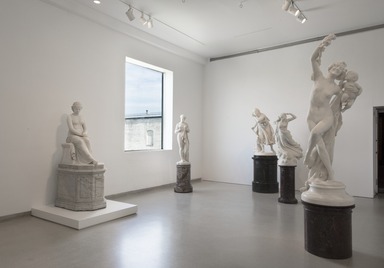

American Art, April 21, 2016 through December 31, 2017 (Image: DIG_E_2016_American_Art_01_PS11.jpg Brooklyn Museum photograph, 2016)

American Art, April 21, 2016 through December 31, 2017 (Image: DIG_E_2016_American_Art_02_PS11.jpg Brooklyn Museum photograph, 2016)
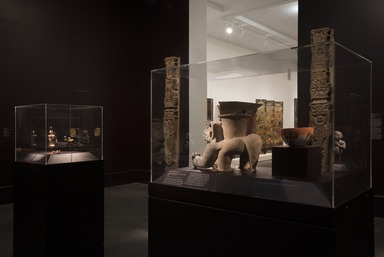
American Art, April 21, 2016 through December 31, 2017 (Image: DIG_E_2016_American_Art_03_PS11.jpg Brooklyn Museum photograph, 2016)
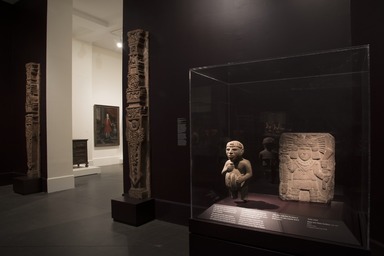
American Art, April 21, 2016 through December 31, 2017 (Image: DIG_E_2016_American_Art_04_PS11.jpg Brooklyn Museum photograph, 2016)

American Art, April 21, 2016 through December 31, 2017 (Image: DIG_E_2016_American_Art_05_PS11.jpg Brooklyn Museum photograph, 2016)
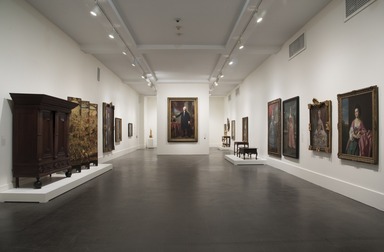
American Art, April 21, 2016 through December 31, 2017 (Image: DIG_E_2016_American_Art_06_PS11.jpg Brooklyn Museum photograph, 2016)

American Art, April 21, 2016 through December 31, 2017 (Image: DIG_E_2016_American_Art_07_PS11.jpg Brooklyn Museum photograph, 2016)

American Art, April 21, 2016 through December 31, 2017 (Image: DIG_E_2016_American_Art_08_PS11.jpg Brooklyn Museum photograph, 2016)

American Art, April 21, 2016 through December 31, 2017 (Image: DIG_E_2016_American_Art_09_PS11.jpg Brooklyn Museum photograph, 2016)
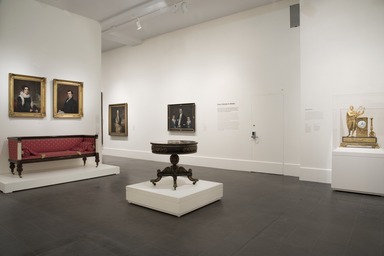
American Art, April 21, 2016 through December 31, 2017 (Image: DIG_E_2016_American_Art_10_PS11.jpg Brooklyn Museum photograph, 2016)
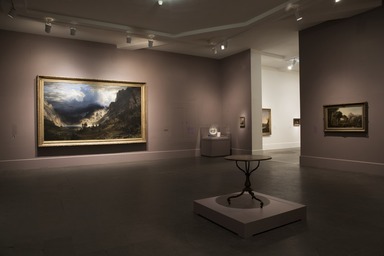
American Art, April 21, 2016 through December 31, 2017 (Image: DIG_E_2016_American_Art_11_PS11.jpg Brooklyn Museum photograph, 2016)
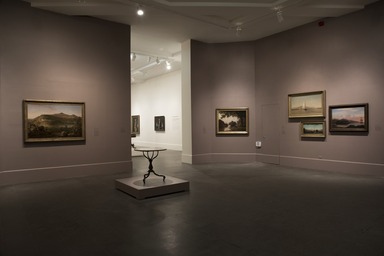
American Art, April 21, 2016 through December 31, 2017 (Image: DIG_E_2016_American_Art_12_PS11.jpg Brooklyn Museum photograph, 2016)
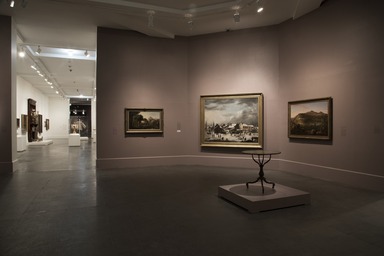
American Art, April 21, 2016 through December 31, 2017 (Image: DIG_E_2016_American_Art_13_PS11.jpg Brooklyn Museum photograph, 2016)
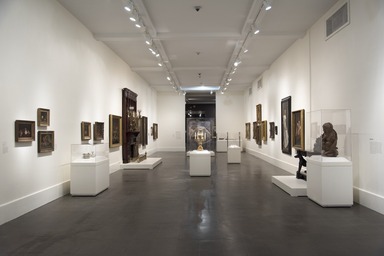
American Art, April 21, 2016 through December 31, 2017 (Image: DIG_E_2016_American_Art_14_PS11.jpg Brooklyn Museum photograph, 2016)
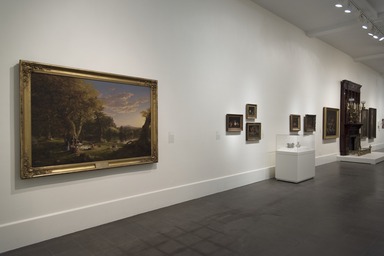
American Art, April 21, 2016 through December 31, 2017 (Image: DIG_E_2016_American_Art_15_PS11.jpg Brooklyn Museum photograph, 2016)

American Art, April 21, 2016 through December 31, 2017 (Image: DIG_E_2016_American_Art_16_PS11.jpg Brooklyn Museum photograph, 2016)
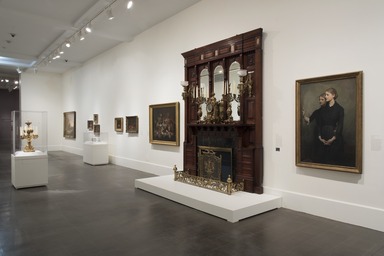
American Art, April 21, 2016 through December 31, 2017 (Image: DIG_E_2016_American_Art_17_PS11.jpg Brooklyn Museum photograph, 2016)

American Art, April 21, 2016 through December 31, 2017 (Image: DIG_E_2016_American_Art_18_PS11.jpg Brooklyn Museum photograph, 2016)

American Art, April 21, 2016 through December 31, 2017 (Image: DIG_E_2016_American_Art_19_PS11.jpg Brooklyn Museum photograph, 2016)
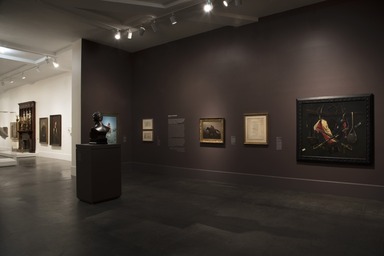
American Art, April 21, 2016 through December 31, 2017 (Image: DIG_E_2016_American_Art_20_PS11.jpg Brooklyn Museum photograph, 2016)
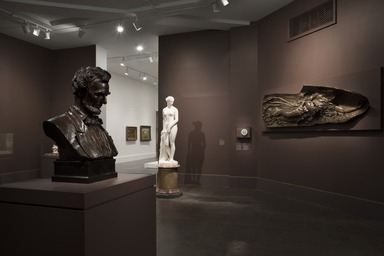
American Art, April 21, 2016 through December 31, 2017 (Image: DIG_E_2016_American_Art_21_PS11.jpg Brooklyn Museum photograph, 2016)

American Art, April 21, 2016 through December 31, 2017 (Image: DIG_E_2016_American_Art_22_PS11.jpg Brooklyn Museum photograph, 2016)

American Art, April 21, 2016 through December 31, 2017 (Image: DIG_E_2016_American_Art_23_PS11.jpg Brooklyn Museum photograph, 2016)
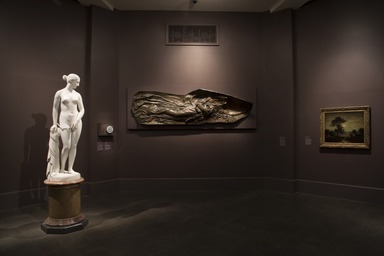
American Art, April 21, 2016 through December 31, 2017 (Image: DIG_E_2016_American_Art_24_PS11.jpg Brooklyn Museum photograph, 2016)

American Art, April 21, 2016 through December 31, 2017 (Image: DIG_E_2016_American_Art_25_PS11.jpg Brooklyn Museum photograph, 2016)
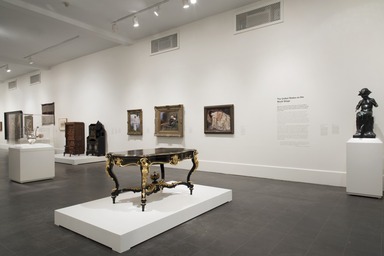
American Art, April 21, 2016 through December 31, 2017 (Image: DIG_E_2016_American_Art_26_PS11.jpg Brooklyn Museum photograph, 2016)
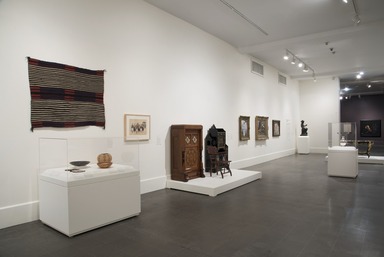
American Art, April 21, 2016 through December 31, 2017 (Image: DIG_E_2016_American_Art_27_PS11.jpg Brooklyn Museum photograph, 2016)

American Art, April 21, 2016 through December 31, 2017 (Image: DIG_E_2016_American_Art_28_PS11.jpg Brooklyn Museum photograph, 2016)
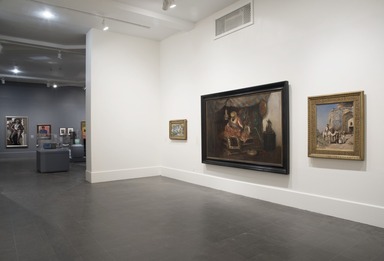
American Art, April 21, 2016 through December 31, 2017 (Image: DIG_E_2016_American_Art_29_PS11.jpg Brooklyn Museum photograph, 2016)

American Art, April 21, 2016 through December 31, 2017 (Image: DIG_E_2016_American_Art_30_PS11.jpg Brooklyn Museum photograph, 2016)

American Art, April 21, 2016 through December 31, 2017 (Image: DIG_E_2016_American_Art_31_PS11.jpg Brooklyn Museum photograph, 2016)

American Art, April 21, 2016 through December 31, 2017 (Image: DIG_E_2016_American_Art_32_PS11.jpg Brooklyn Museum photograph, 2016)
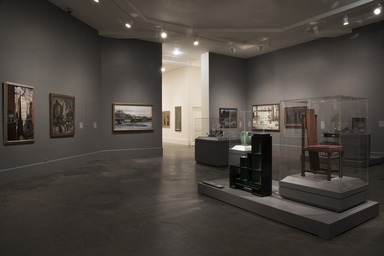
American Art, April 21, 2016 through December 31, 2017 (Image: DIG_E_2016_American_Art_33_PS11.jpg Brooklyn Museum photograph, 2016)

American Art, April 21, 2016 through December 31, 2017 (Image: DIG_E_2016_American_Art_34_PS11.jpg Brooklyn Museum photograph, 2016)
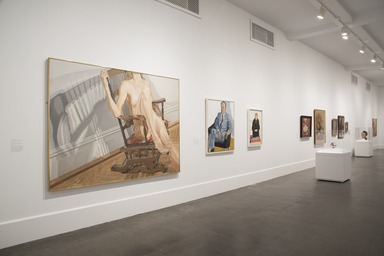
American Art, April 21, 2016 through December 31, 2017 (Image: DIG_E_2016_American_Art_35_PS11.jpg Brooklyn Museum photograph, 2016)

American Art, April 21, 2016 through December 31, 2017 (Image: DIG_E_2016_American_Art_36_PS11.jpg Brooklyn Museum photograph, 2016)
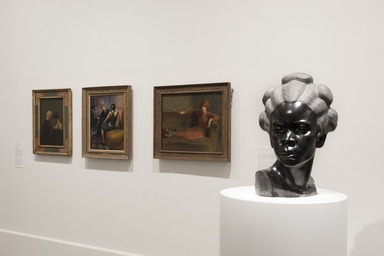
American Art, April 21, 2016 through December 31, 2017 (Image: DIG_E_2016_American_Art_37_PS11.jpg Brooklyn Museum photograph, 2016)
American Art
-
American Art
As the face of America is changing, becoming more diverse, so too are ideas of what constitutes “American” art.
This chronological installation of the Luce Center for American Art therefore attempts to take a more inclusive approach. It embraces works by women and people of color. And it is more Pan-American, extending the definition of America to encompass not only the United States but Central and South America, Mexico, and the Caribbean basin, beginning with the art of the first peoples who lived in the region thousands of years before contact with European colonizers.
Inevitably, the historical stories told by some of the objects in these galleries raise difficult, complex issues, since many works were made for and collected by racially and economically privileged segments of society. Offering a more balanced view, and telling different stories, this presentation also features examples from our Native American, Spanish American, and African American collections. With themes that include cross-cultural influences, racial discrimination, and urbanization, the installation expands on issues confronting many Americans today.
America’s history, her aspirations, her peculiar triumphs, her even more peculiar defeats, and her position in the world—yesterday and today—are all so profoundly and stubbornly unique that the very word “America” remains a new, almost completely undefined and extremely controversial proper noun. No one in the world seems to know exactly what it describes, not even we motley millions who call ourselves Americans.
—James Baldwin, “The Discovery of What It Means to Be an American” (1959) -
Neoclassical Sculpture in the United States
Beginning as early as the 1820s, U.S. sculptors moved abroad to study the sculptural works of the Renaissance, as well as those created by contemporary artists. Residing in Florence and Rome, sculptors such as Randolph Rogers, William Wetmore Story, and Harriet Hosmer crafted idealized figures that emphasized the Neoclassical principles of harmony, simplicity, and proportion.
The Neoclassical style grew out of the late eighteenth-century interest in classical antiquity, stimulated by excavations at Herculaneum and Pompeii in the early 1700s. As artists began to study the impeccably preserved artifacts from these sites and works from the Renaissance, they created sculptures that emphasized classical perfection in order to inspire moral virtue and the appreciation of beauty.
A later group of sculptors, including Frederick MacMonnies and Augustus Saint-Gaudens, received training at the École des Beaux- Arts in Paris and continued to emphasize Neoclassical ideals. -
The Americas’ First Peoples
4000 B.C.E.–1521 C.E.
The arts of the Americas’ indigenous peoples express a deep, timeless spiritual connection to their ancestors and sacred homelands.
The diverse works in this gallery represent only a fraction of the thousands of distinct cultures that thrived long before Europeans arrived in North, Central, and South America. In these cultures, deep relationships with the natural and supernatural worlds were honored as essential to life.
Despite the European conquest and the massacre of millions, the Americas’ indigenous peoples persevered, and continued to develop their rich and creative artistic traditions. Throughout this installation, examples of their work spanning six thousand years reveal ongoing changes and innovations that grew out of contact with new cultural traditions. Fundamentally, these artworks express the eternal message of the first peoples: “We have always been here.” -
The Lenape Language Today
You’ve got to know your language to understand your culture.
—Delaware Nation website, “Lenape Language Classes,” https://www.delawarenation-nsn.gov/lenape-language-classes
The soundtrack in this gallery is a greeting in the two Lenape-language dialects: Unami and Munsee. These closely related languages of the Eastern Algonquian linguistic group were spoken by the Lenape people when they inhabited their ancestral homeland of Lenapehoking, and continue to be spoken today by their descendants (see nearby maps). Today, every federally recognized Native nation offers language classes or online language resources to community members.
The English translation of the greeting is “We are glad because you people came to Lenapehoking,” and the transcription is as follows:
In Unami: Nulelintamuhena Eli Paekw Lenapehoking
In Munsee: Nooleelúndam éel-páyeekw Éenda Lunaapeewáhkiing
Curtis Zunigha, Director of Cultural Resources for the Delaware Tribe of Indians in Bartlesville, Oklahoma, is speaking the Unami (“the people downriver”) dialect, and Kristin Jacobs, a Delaware language teacher at the Naahii Ridge Elementary School, is speaking the Munsee (“the people upriver”) dialect. Jacobs is a member of the Eelŭnaapéewi Lahkéewiit Reserve, also known as the Delaware Nation at Moraviantown, in Ontario Canada. -
The First Peoples of the Americas
4000 B.C.E.–1521 C.E.
A spiritual connection to ancestors and sacred homelands is central to the cultures of the Indigenous peoples of the Americas.
The diverse works in this gallery represent only a fraction of the thousands of distinct and complex cultures that thrived long before Europeans arrived in North, Central, and South America. In these cultures, deep relationships with the natural and supernatural worlds were honored and seen as essential to life.
Despite the European conquest and the massacre of millions, Indigenous peoples of the Americas persevered and continued to develop their own rich and creative artistic traditions. Throughout this installation, examples of aesthetic, functional, and ceremonial objects spanning six thousand years reveal sophisticated cultures with intimate knowledge of and respect for the natural world and their ancestral homelands. Fundamentally, these artworks express the eternal message of the First Peoples: “We have always been here.” -
Consultation and Collaboration
In order to acknowledge the Brooklyn Museum’s location on Lenapehoking, the Museum organized a two-day workshop called “Of This Land: A Convening on Living Land Acknowledgments in Brooklyn” in October 2019. The program included Lenape representatives from four federally recognized tribes and the Lenape Center, along with staff from eight Brooklyn cultural institutions. The goal of the convening was to discuss how Brooklyn institutions can implement living or ongoing land acknowledgment projects that are appropriate and respectful to Lenape (Delaware) Nations. Our land acknowledgment statement adjacent to the Museum’s main entrance and the presentation in this gallery grew out of this workshop. -
Contested Visions of the Land
During the nineteenth century, Euro-American colonists and Indigenous people had differing views about land—which influenced the way the environment was represented by the artists of the time. Painters such as the Scottish American William Keith depicted the land in romantic ways, focusing on its majestic and pristine qualities, even though Native people had inhabited and maintained those lands for millennia. Landscape painters also occasionally inserted Native bodies into depictions of the American wilderness to reinforce the stereotype that Indigenous people were equally untamed.
However, Native Americans possessed sophisticated knowledge about the environment and seasons, on which their survival depended. Indigenous understandings of the natural world shaped their language, daily life, ceremonies, clothing, and design sensibilities. Their worldview that human beings and the land are interconnected was the opposite of that held by U.S. governmental authorities, who regarded the land as something to be dominated, and removed Indigenous people from ancestral homelands to clear them for white settlers. The legacy of this colonial history continues today. -
From Colonies to States
The Colonial Period in the Americas, 1660–1776
In the colonial Americas, the well-to-do displayed luxury goods and paintings, especially family portraits, to demonstrate their social standing.
Early Dutch and British colonists commissioned objects from artisans who were often self-taught or had some basic training in their country of origin. By the second half of the eighteenth century, private wealth had dramatically increased, as had the demand for fine items. Colonial artisans responded by emulating recently imported European objects. New immigrant artisans also brought with them the latest European styles and techniques, and the quality of objects produced in the colonies rose.
At the same time, in Spain’s American territories, European-born Spaniards formed the top of the social pyramid. But the region’s emerging market economy and its great distance from Spain opened new opportunities for social as well as economic advancement for many of its inhabitants. By the eighteenth century, elite Spanish Americans of all heritages—including Creoles (American-born Spaniards), mestizos (people of mixed descent), and native people— acquired works produced in both indigenous workshops and guilds established by the Catholic Church. -
From Colonies to States
The Early Republic, 1776–1830
After the United States achieved political independence from the British monarchy in 1783, artists adopted the classical style to align the new republic with the original democracies of ancient Greece and Republican Rome.
In composing the Constitution in 1787, the founders of the United States were inspired in part by classical principles of reason and the model of classical Greek and Roman culture. Highly conscious of the radical nature of their new government—which placed trust in the people, and in an unfamiliar electoral process, after centuries of monarchical rule—citizens welcomed a validating association with these ancient, touchstone democracies.
Greek and Roman imagery was embraced as a powerful symbol of national identity, a reminder of civic duty, and a sign of an ideal society. By the early nineteenth century, artists employed this revived classical artistic vocabulary, called Neoclassicism, for almost every aspect of U.S. visual culture: architecture, fine arts, interior decoration, and fashion. This vocabulary—featuring pediments, columns, arches, wreaths, and garlands—can be observed in many of the objects and portraits in this gallery. -
African American Artistic Production
Because the Brooklyn Museum’s past collecting practices favored objects made for elite white patrons and those made by privileged white men, there are few objects in the collection that display the artistic production of eighteenth- and nineteenth-century African Americans. Yet free and enslaved Black artistic and craft production was just as pervasive as white people’s creative output. Today, new research has highlighted these practices, and we are foregrounding and celebrating those traditions here. -
Abolition
With his Emancipation Proclamation of January 1, 1863, President Abraham Lincoln declared freedom for the enslaved men and women of the Confederate states. The Proclamation did not apply to slaveholding states outside the Confederacy or to parts of the Confederacy already under Northern control. For many African Americans, the Proclamation was not immediately enforced and they remained enslaved. Today we celebrate Juneteenth to mark the announcement on June 19, 1865, by General Gordon Granger of the Union Army that gave freedom to the enslaved in Texas. Slavery finally ended in the United States on December 18, 1865, with the passage of the Thirteenth Amendment. Britain had previously abolished the slave trade in 1807, and the Slavery Abolition Act of 1833 fully outlawed the practice in the British Empire, with the exception of those territories controlled by the East India Company.
Racial discrimination in the United States did not end with the Thirteenth Amendment, nor was abolitionism untainted by racist and paternalistic ideas and imagery. Today, the term abolitionism evokes equality for all and the breakdown and defunding of government systems and agencies that oppress people of color, but that was not the case in the eighteenth and nineteenth centuries. Those who supported the abolition of slavery did not envision enslaved or free Black citizens as equals but rather as individuals who would continue to occupy a subservient or lower social, economic, and political position within American society. Indeed, images of the enslaved even within the abolitionist cause did not illustrate a sense of power and agency but instead characterized Black subjects as supplicant and compliant, powerfully communicating a culture of white supremacy and the fact that conditional freedom still carried with it an oppressed station. -
Eighteenth-Century Trade and Labor
Historically, museums have focused almost exclusively on style, processes of fabrication, and the biographies of the people who owned the workshops where objects were made and the people who acquired the final works. These were almost wholly white males of European origin or descent. Here, we seek to recognize and foreground the artistic production and labor of those whose names were unrecorded owing to their enslavement. Many of the raw materials—such as mahogany, coffee, and sugar—that were transformed into furniture for wealthy white landowners and merchants or served to them in coffeepots and sugar bowls were cultivated and processed by the labor of enslaved Africans and Indigenous people on plantations in the Caribbean and the Americas. Today, we are learning more about enslaved Black and Indigenous craftspeople who provided skilled labor in these workshops yet have often remained unidentified and uncredited. Further research may reveal the extent of their contribution to the design and fabrication of these expensive goods. -
British America: Port Royal, Jamaica
In the seventeenth century, Port Royal, Jamaica, was a rowdy town full of privateers, pirates, and sex workers, along with British merchants and the wealthy elite making their fortunes from large sugar plantations and the labor of enslaved Africans. Privateers were private ships that held government commissions to capture enemy shipments in wartime—in this case, ships that seized Spanish merchant vessels for the British. Port Royal was also one of the wealthiest communities in the British Empire from 1655 until 1692, when a massive earthquake devastated the city. -
Neoclassicism
All of the decorative arts objects in this gallery are in the Neoclassical style, inspired by the arts of ancient Greece and Rome. Much of European art is dependent on the arts of these classical cultures, but in the eighteenth century, excavations of ancient Pompeii and Herculaneum stimulated renewed interest in the ancient world. For Napoleon in France and other kings in Europe, the Neoclassical style represented imperial grandeur. For the peoples of the new United States, however, Republican Rome and Greek philosophy embodied their new ideals of freedom and citizenship. -
Imagining the New Nation’s Landscape
1800–1880
In search of a uniquely “American” identity throughout the nineteenth century, many U.S. artists increasingly turned to the natural grandeur of North American scenery.
Landmarks such as Niagara Falls and expansive landscapes such as the Catskill Mountains were celebrated in literature and poetry, represented in paintings and prints, and even reproduced on dinnerware and furniture. These sites became powerful symbols of U.S. history and culture—emblems of what many considered the “natural paradise” of the New World. They also encouraged a booming tourism industry, which posed a conflict between the preservation of unspoiled wilderness and the national mandate for progress.
The Hudson River School of landscape painting—with its panoramic vistas, deep space, deft atmospheric effects, and precise details—predominated from the 1820s to the 1860s. With the end of the Civil War in 1865, different styles and approaches emerged. More intimate, freely brushed landscape subjects, substituting poetry of mood for a specific sense of place, became increasingly fashionable.
American Scenery . . . is a subject that to every American ought to be of surpassing interest; for, whether he beholds the Hudson mingling waters with the Atlantic—explores the central wilds of this vast continent, or stands on the margin of the distant Oregon, he is still in the midst of American scenery—it is his own land.
—Thomas Cole, “Essay on American Scenery” (1836) -
Visions and Myths of a Nation
Life in the Northeast, 1800–1890
Even as the Hudson River School envisioned a heroic landscape, in contrast, nineteenth-century writers began to call for a national culture rooted in direct observation of everyday life in the United States, with depictions of common and familiar subjects.
Genre paintings, showing the daily life of working-class white Americans, rose in popularity. Most of these paintings depicted life in the Northeast’s rapidly developing cities, swelling with new arrivals from the surrounding areas. Others idealized country life as a beneficial contrast to the congestion of cities. For urban patrons, these rural subjects also affirmed their own rise in social and economic status by hinting at the less-sophisticated world they had left behind.
Patrons of the arts bought and commissioned portraits, still-life paintings, and decorative arts that showcased their new wealth. In the mid-nineteenth century, artists in the United States also gave increasing attention to depicting urban domestic interiors. The decorative arts seen here demonstrate how these interiors would have been furnished and reflect the popular design styles of the period.
I ask not for the great, the remote, the romantic; what is doing in Italy or Arabia. . . . I embrace the common, I explore and sit at the feet of the familiar, the low. Give me insight into to-day, and you may have the antique and future worlds.
—Ralph Waldo Emerson, The American Scholar (1837) -
The Arts and Crafts Movement
In the later nineteenth century, Arts and Crafts–style objects in the home signaled progressive taste. The Arts and Crafts Movement developed in England in the 1860s and in the United States in the 1890s, in reaction to the dehumanizing effects of the Industrial Revolution and urban labor. Reform-minded individuals such as John Ruskin and William Morris in England championed a utopian vision of the Middle Ages, the era of the artisan.
The reformers of the Arts and Crafts Movement saw in handwork a way for single women to attain dignity and be self-supporting, and for married women to spend their time rewardingly. As the works here (made by women artists) show, Arts and Crafts–style objects continued to be made well into the twentieth century, even as machine-made objects became more common. -
Naturalism
One of the most potent and omnipresent elements of design in the nineteenth century was naturalism. Realistic decoration based on close observation of the natural world has been a component of art since the dawn of time. In the nineteenth century, however, nature became a cult, and it could almost be considered a style at midcentury. Technically skilled depictions of nature became the hallmark of high art. Inventors of the time aspired to devise machines that could carve realistic natural decoration to rival the work of master artisans. Ultimately, no machine would prove to be a match for hand carving, and the craft of the carver continued to be valued throughout the century. -
Visions and Myths of a Nation
Westward Expansion, 1800–1890
Many, if not most, European Americans believed they had a God-given right to seize and settle the land west of the Mississippi, regardless of the Native Americans who already lived there. That belief underlies many artists’ visualizations of the American West in the nineteenth century.
By the late 1840s, the U.S. government had managed, through purchase from other countries and treaties with Native tribes, to extend its borders to the Pacific Ocean. This expansion encouraged a period of exploration and settlement lasting until the early 1890s. European Americans saw it as their patriotic and spiritual mission—their “divine right”—to conquer what was understood as the last “uncivilized” area of the New World and introduce Christianity. This national doctrine of Manifest Destiny resulted in the killing or displacement of millions of Native Americans.
Accompanying scientific and governmental expeditions, U.S. artists traveled to the frontier in an attempt to picture the West for those back East. In landscapes and genre scenes, they justified westward expansion by depicting the region as a land of untamed peoples and untouched wilderness. Although indigenous art and culture were very much alive, as seen in Native works displayed here, Native Americans were portrayed by white artists as a romanticized race facing extinction. -
Native American Graves Protection and Repatriation Act
Relationships between Native Americans, dealers, collectors, and institutions are evolving. The 1990 Native American Graves Protection and Repatriation Act (NAGPRA) permits Native American tribes to claim four categories of objects from any federally supported institution. The categories are human remains, objects buried with human remains, objects of sacred and ceremonial significance that are needed to practice religious ceremonies, and objects of cultural patrimony (items that can only be separated from the tribe through tribal agreement, not individual consent).
The Brooklyn Museum has supplied all federally recognized tribes with inventories of all objects attributed to them in the Museum records and began hosting tribal consultations in 1995.
Although claims may result in the loss of certain objects or important parts of the Museum’s collection, tribal visits have resulted in opening channels of communication between the Museum and numerous communities. Native American delegations have been most generous with their knowledge. They have contributed greatly to our information about the collection, as well as the respectful methods for storing, handling, and exhibiting works. Such cooperation leads to a more complex understanding between the Brooklyn Museum and Native peoples, and results in a more thoughtful presentation of the Native American collection to our visitors. -
Nations Divided
1860–1910
Although rarely depicted directly by nineteenth-century visual artists, the harsher realities of the Americas—slavery, racial and religious discrimination, and the systematic destruction of indigenous lives and cultures—were often themes or undercurrents in the art of the times.
In the United States, racial discrimination did not end with the close of the Civil War (1861–65) and the 1865 passage of the Thirteenth Amendment, which officially abolished slavery. Millions of formerly enslaved African Americans and their descendants continued to face gross prejudice, amid the failures of the Reconstruction Era and the passage of the infamous Jim Crow laws. Other groups suffered as well. The 1882 Chinese Exclusion Act prevented immigration of all Chinese laborers for more than sixty years. And Native Americans were forced onto reservations in inhospitable regions of the country, where they were prohibited from practicing traditional religions and ways of life. While some artists responded openly to these problems, most white artists presented romanticized or stereotyped images of people of color.
In colonial Spanish America, which included many Caribbean islands and all of present-day Mexico and Central and South America (with the exception of Brazil), revolutions against Spain’s imposed social and racial hierarchy raged throughout the eighteenth and early nineteenth centuries. By 1854 almost all of formerly Spanish America was free of European rule. The new independent nations celebrated their indigenous heritage while continuing to embrace Catholicism and European artistic traditions.
We stand in our place to day and wage war not merely for our selves, but for the whole world; not for this generation, but for unborn generations, and for all time. We are writing the statutes of eternal justice and liberty, in the blood of tyrants, as a warning to all future cruel ambition.
—Frederick Douglass, “The Mission of the War. Delivered in Concert Hall: Philadelphia” (1863) -
The United States on the World Stage
1865–1930
With travel restrictions lifted at the close of the Civil War in 1865, U.S. artists found subject matter and inspiration abroad, while Native American artists produced works for a growing tourist market.
Throughout the 1870s and 1880s, advances in steamship and rail travel allowed people in the United States with sufficient means, including artists, to travel more comfortably and efficiently. Hoping to match their European rivals and establish international reputations, many artists gravitated to such art capitals as London, Paris, and Rome. There they received academic instruction and experienced the sweeping changes taking place in contemporary European art. Others embraced the vogue for more remote subject matter, traveling to Asia and the Middle East.
A growing interest in Native American art developed among collectors and tourists. In turn, Native artists responded to outside influences, both positive and negative. Some artistic innovations resulted from an exchange with European traditions. Others were adaptations to governmental suppression, as reservation policies sometimes made traditional artistic materials unavailable and artists had to improvise. In the decorative arts, inventions and ideas began to be more freely exchanged internationally. Objects took on a more streamlined look as the very means of production—the machine—slowly began to influence design.
We are a composite people. Our knowledge is eclectic. . . . It remains, then, for us to be as eclectic in our art as in the rest of our civilization. To get artistic riches by virtue of assimilated examples, knowledge, and ideas, drawn from all sources, and made national and homogeneous by a solidarity of our own, is our right pathway to consummate art.
—James Jackson Jarves, The Art Idea (1864) -
The Aesthetic Movement
The Aesthetic Movement, which began in England in the 1860s and then spread to the United States, was a reaction against the perceived bad taste of the day, in which a riot of decoration overpowered objects. Inspired by the arts of Japan, the movement sought to elevate decorative art objects to the level of painting and sculpture.
Beauty was no longer the prerogative of the elite or the domain of the high arts, but an imperative in everyday life. The writer Oscar Wilde, a leader of the movement, thought that even a doorknob could be imbued with good design and therefore be an object for contemplation. A doorknob and a door hinge are duly displayed here.
Beautiful things began to be made . . . and the use of beautiful things and their value and importance was set forth and now it is almost impossible to enter any modern house without seeing some recognition of good taste, some recognition of the value of lovely surroundings, some sign of the appreciation of beauty.
—Oscar Wilde, “The Soul of Man Under Socialism” (1891) -
The City and the Rise of the Modern Woman
1900–1945
Rapid technological advances, industrialization, and urbanization transformed life in the United States during the first half of the twentieth century. They profoundly affected the subject matter, materials, and techniques of art and design.
At the beginning of the twentieth century, the awareness of a new, modern era was especially strong in cities, where skyscrapers were perhaps the most visible signs of change. Rural residents of the United States relocated to urban centers for jobs, joining thousands of immigrants who competed with them for employment. For such reasons, modern life in the crowded city often induced an unsettling mix of excitement and anxiety. Painters recorded the changing city, with its progressively diverse crowds and new technologies.
In the urban environment, women experienced new financial independence and freedom. After gaining the right to vote in 1920, young women increasingly entered the workforce. For the first time, a small number of women, often new immigrants who had firsthand experience of artistic innovations in Europe, became industrial designers. They drew inspiration from Machine Age materials and streamlined design.
I realize it’s unusual for an artist to want to work way up near the roof of a big hotel, in the heart of a roaring city but I think that’s just what the artist of today needs. . . . Today the city is something bigger, grander, more complex than ever. . . . There is a meaning in its strong warm grip we are all trying to grasp. And nothing can be gained by running away.
—Georgia O’Keeffe, interview (1928) -
Beyond Borders and Boundaries
20th and 21st Centuries
Throughout the twentieth century and beyond, the figurative and narrative traditions in art endured even as international conflicts, civil unrest, freer exchange of ideas, and new waves of immigration led to the emergence of multiple artistic styles.
The work of many American artists was influenced by international and national crises such as the two world wars, the Great Depression, and the Civil Rights Movement. At the same time, with the influx of immigrants and the increasing development of new industries and technologies, people exchanged ideas across national borders much more easily. Many artists focused on the human figure, either to portray particular individuals or to engage with social and political issues. Others gravitated toward nature, seeking emotional or spiritual connections with the environment.
By the 1970s, and continuing to today, artists of many ethnicities were progressively breaking down longstanding boundaries regarding privilege and identity, along with the very definition of what constitutes art. The role of the artist is changing today as women, the LGBTQ community, and people of color are more readily able to achieve recognition and quite visibly contribute to the cultural framework of American society. -
Large Oil Sketch: Associate Justice Ruth Bader Ginsburg
At a time of significant transition and debate in the United States Supreme Court, the pairing of these two works celebrating the Honorable Ruth Bader Ginsburg, a Brooklyn native, draws attention to the ongoing fight for justice in this country. The phrase “equal justice under law,” engraved across the Supreme Court Building’s façade in Washington, D.C., equally exemplifies Ginsburg’s career as a lawyer and, since 1993, an Associate Justice of the Supreme Court. As only the second woman to serve in this role, and given her record defending civil liberties, Ginsburg has earned a reputation as a feminist pioneer.
In the featured works, painter Constance Peck Beaty and artist duo CRANK honor Ginsburg and convey the wide reach of her legacy. Beaty offers an intimate and studied look at her sitter—the result of numerous sessions and preparatory sketches—while CRANK takes a more playful approach, emphasizing Ginsburg’s broader appeal within popular culture.
-
April 1, 2016
A signed, historical copy of the Emancipation Proclamation will be on view for three months as part of the American Galleries reopening
ASK, the Museum’s app, now available on Android and iPhone
The Brooklyn Museum is pleased to announce that its American and European galleries have been refreshed and reorganized, while two-thirds of its unparalleled Egyptian galleries have been reinstalled with a new thematic structure. These are the first reinstallations of the Museum’s permanent collection galleries since 2003, and they represent the first collection initiative launched under the leadership of Anne Pasternak since her appointment seven months ago as the Museum’s Shelby White and Leon Levy Director. Pasternak commented, “It’s time to revisit the Brooklyn Museum’s extraordinary collections, which span more than five thousand years of human creativity. And this is just the beginning, as Team Brooklyn Museum sets out to pursue our greatest potential and takes a fresh look at our incredible collections—while also conceiving new, special exhibitions and inciting conversations about some of the important topics in our borough, our city, and all across the globe.” The Brooklyn Museum will celebrate the reopenings at its annual fundraiser, the Brooklyn Artists Ball, on April 20.
New developments include reinstalled American art galleries that embrace a more inclusive view of history and geography, and recognize the shifting demographics of this country. Additional changes include the reorganized East Wing galleries of ancient Egyptian art, which have been restored to the original proportions designed by the architects McKim, Mead & White. While opening up new perspectives on Egypt as an African culture, the galleries will also incorporate a special contemporary art project for the first time, demonstrating the continuing importance of the ancient world to the artists of today.
At the same time, the reconfigured European gallery, housed in the Beaux-Arts Court, has been rehung thematically with works that now span a wide range of mediums, including sculpture and works on paper, in addition to painting.
Pasternak continued: “Our staff worked collaboratively to redefine our galleries so that visitors can have a fresh look at the masterpieces in our collection, seeing their own personal histories reflected in these works of art, and learning about the histories of others.”
Additionally, with support from Bloomberg Philanthropies, visitors can now experience the full interactive capabilities of the Museum’s unique ASK app, which connects visitors with art experts in real time, now available on iPhone and Android.
American Galleries
The reinstalled American art galleries (formerly called American Identities) will explore the overarching theme “What constitutes American art?,” taking a more Pan-American and cross-cultural view. The new installation, chronologically arranged, is made up of eight sections: “The Americas’ First Peoples”; “From Colonies to States”; “Imagining the New Nation’s Landscape”; “Visions and Myths of a Nation”; “Nations Divided”; “The United States on the World Stage”; “The City and the Rise of the Modern Woman”; and “Beyond Borders and Boundaries.”
In the reinstallation, the Museum is pleased to display such recent acquisitions as John Carroll, Showgirl (1929) and Daniel Cottier and Tiffany & Company, Clock (1883). Major works on view include Gilbert Stuart, George Washington (1796); Albert Bierstadt, A Storm in the Rocky Mountains, Mt. Rosalie (1866); a Maya artist’s Figure Emerging from a Waterlily (600–900); Herter Brothers, Cabinet (circa 1872); and Red River Metis or Yanktonai Sioux artist, Dress Shirt (before 1830). Curator Connie H. Choi notes, “Our presentation offers a more balanced view and tells different stories, featuring themes that address cross-cultural influences as well as historical issues of racial discrimination and urbanization. In these ways, the installation expands on questions confronting many Americans today.” Among the wide-ranging list of artists and artisans featured are John Biggers, Miguel Cabrera, William Merritt Chase, John Singleton Copley, Beauford Delaney, Thomas Eakins, Carol Emarthle-Douglas, William Glackens, Winslow Homer, Edward Hopper, Maria Martinez, Isamu Noguchi, Georgia O’Keeffe, Diego Rivera, John Singer Sargent, Florine Stettheimer, Mickalene Thomas, Tiffany & Company, and Union Porcelain Works.
Conservation efforts have made it possible for the American galleries to include such Pan-American works as Devotional Cross (19th century) from Mexico, and Carved Pilaster from Our Lady of Guadalupe (18th century) from Zuni Pueblo, New Mexico.
As part of the reopening, the Museum will display a historical, signed copy of the original Emancipation Proclamation for three months. The proclamation, first signed by Abraham Lincoln in 1863, freed all enslaved Africans in states then in rebellion, providing a legal framework for the eventual emancipation of millions of others. The official manuscript is in the National Archives in Washington. The copy, on loan from a private collector, is one of forty-eight versions, individually signed by Lincoln, in the Leland-Boker edition of 1864, sold to benefit Union soldiers who fought in the Civil War.
Ancient Egyptian Galleries
One of the most visited areas in the Brooklyn Museum, the ancient Egyptian galleries house a world-famous collection frequented by tourists, school groups, and new and returning visitors alike. The Museum began collecting Egyptian antiquities in 1902, with most of the art now in the galleries arriving in New York during the nineteenth century in private collections before their later transfer to the Museum.
Over the years, renovations in the Egyptian galleries have included a 1993 reorganization, which told the story of Egyptian art from the Amarna Period (circa 1352 B.C.E.) until the time of Roman rule (30 B.C.E.–395 C.E.). An expansion of the galleries, in April 2003, made it possible to introduce art from Egypt’s earliest known origins (circa 3500 b.c.e.) until the later Eighteenth Dynasty. The widely popular Mummy Chamber installation opened in 2010.
For the 2016 reinstallation, two-thirds of the Egyptian permanent galleries (formerly known as Egypt Reborn) will incorporate new themes that recognize the significance of African culture to the Nile Valley; the multicultural nature of Egyptian society; and its close but complex relationship with nearby Nubia. Important changes to the galleries include the removal of re-creations of Egyptian architectural elements, allowing for a newly reconfigured open floor plan. And for the first time, a contemporary art work, Lorraine O’Grady’s Miscegenated Family Album (1994), will be incorporated into these galleries, to establish a dialogue between the past and the present.
Curator Edward Bleiberg notes, “The new aesthetic of the galleries directs visitors to the art and brings out the natural beauty of the subtle Egyptian colors. The ancient artists created these works with specific light levels in mind. It is important not to set them ablaze with such dazzlingly bright spotlights as to distort their intended appearance. They are best seen, as they were meant to be, with raking light as if from a torch. This will finally be possible in our new galleries.”
In total, the ancient Egyptian galleries boast more than 1,600 objects. Significant works on view include Amunhotep III (circa 1390–1352 B.C.E.); Statuette of Ankhnesmeryre II and Her Son, Pepy II (circa 2288–2224 or 2194 B.C.E.); King as Child Protected by Goddess (circa 700–670 B.C.E.); A Prince of Tekhet (circa 1479–1400 B.C.E.); and Figure of a Bound Foreign Prisoner (circa 1979–1801 B.C.E.).
European Gallery
The European art gallery (formerly known as European Painting), housed in the Museum’s Beaux-Arts Court and its third-floor lobby, features 63 artworks, including Frans Hals, Portrait of a Man (circa 1614–15); Francisco de Goya, Portrait of Don Tadeo Bravo de Rivero (1806); Edgar Degas, Nude Woman Drying Herself (circa 1884–86); and Claude Monet, Houses of Parliament (1903). Curator Richard Aste explains, “The unifying theme here is European identity-making through the body, faith, fashion, and a shifting sense of place.” New thematic sections include “The Nude”; “The Sacred: Religious Art”; “The Secular: Portraiture”; “The Menacing Landscape”; and “The Tranquil Landscape.” And now, for the first time, works in the gallery will span all major artistic mediums represented in the collection: paintings, sculpture, and works on paper, which make up half of Brooklyn’s holdings of European art. Ten sculptures from the Museum’s collection of sixty sculptures and works on paper by Auguste Rodin will be relocated from the Entrance Pavilion to the galleries, to join the historical dialogue of the male and female form, dressed and nude, in this complete reinstallation, the first since 2003. Additional artists whose works are on view include Lucas Cranach, Gustave Courbet, Henri Fantin-Latour, Paul Gauguin, Edvard Munch, Egon Schiele, and Yves Tanguy.
Rethinking the hanging of the gallery space led to the removal of obstructive guardrails and the installation of improved lighting. Conservation support for the project made possible the reframing of the Degas and Hals paintings; the stabilizing of historical frames; the stabilization of Gauguin’s Tahitian Woman (1894) using a consolidant/adhesive; and the addition of non-reflective Optium Acrylic glazing to reduce glare, letting visitors see the works more clearly.
The Brooklyn Museum’s ASK App
This April, “ASK Brooklyn Museum”—the Museum’s pioneering app, which enables visitors to interact in real time with Museum experts—will be fully functional on both Android and iPhone. The app is funded by Bloomberg Philanthropies through its Bloomberg Connects program, a global initiative that helps cultural institutions to innovate and engage audiences through digital platforms.
Free to download on both iPhones and Androids, ASK enables visitors to pose questions about any work of art on view at the Museum and receive answers from the Audience Engagement Team in real time, providing a tailored, on-site educational experience. The app’s design is based on the look of Apple’s iMessage, to offer a simple and familiar communications interface that is both kid- and adult-friendly. Using location-aware technology, the app pinpoints the visitor’s precise whereabouts in the galleries, helping the Museum team to better answer questions and recommend other objects of interest nearby.
“ASK uses a very simple mechanism of asking a question and leverages that engagement, so we can learn more about how visitors are experiencing the Museum,” said Shelley Bernstein, Vice Director for Digital Engagement and Technology. “This is helping our curators see what’s working best and where we can make refinements for greater clarity.”
About the Brooklyn Museum
The Brooklyn Museum has long been at the forefront of engagement with underserved and younger audiences, from its widely popular Target First Saturday program and creative reinstallations of its permanent collection, to its pioneering online presence and inventive use of technology in reimagining the visitor experience. A driving force behind the massive growth and energy of the Borough of Brooklyn and of its diverse cultural community, the half a million annual visitors to the Brooklyn Museum make up one of New York’s most inclusive museum-going audiences.
With roots dating back to 1823, the Brooklyn Museum is among the oldest and largest art museums in the United States, with a collection representing nearly every culture, ranging from some of the most important ancient Egyptian works in the nation, to the arts of the Pacific Islands, Asia, Africa, the Islamic world, and Native American art, to U.S. and European art, and international contemporary works. The Museum is home to the Elizabeth A. Sackler Center for Feminist Art, the only facility of its kind in the country.
The Museum has developed a broad schedule of special exhibitions, from scholarly to popular-culture offerings. Its critically acclaimed spring 2016 season features Tom Sachs: Boombox Retrospective, 1999–2016; Disguise: Masks and Global African Art; This Place; and Agitprop! The Museum reaches audiences across the country and internationally with a robust schedule of traveling exhibitions, often drawn from its own collections, among them the current tours of Kehinde Wiley: A New Republic; Killer Heels: The Art of the High- Heeled Shoe; and Basquiat: The Unknown Notebooks. The Museum also hosts extraordinary touring shows in partnership with other world-class institutions. Upcoming exhibitions organized by the Brooklyn Museum include Who Shot Sports: A Photographic History, 1843 to the Present and Iggy Pop Life Class: A Project by Jeremy Deller.
This installation of the Brooklyn Museum’s American Art collection is organized by Connie H. Choi, Assistant Curator of American Art, with Barry R. Harwood, Curator of Decorative Arts; Nancy Rosoff, Andrew W. Mellon Curator of the Arts of the Americas; Susan Kennedy Zeller, Associate Curator of Native American Art; and Richard Aste, Curator of European Art.
Generous support for the installation of the American galleries as a part of the Brooklyn Museum’s Countdown to Launch initiatives is provided by Barbara and John Vogelstein, Dana Ben-Ari and Nikola Duravcevic, Tamara and Gregory Belinfanti, and Leslie and Alan Beller.
This installation of the Brooklyn Museum’s Ancient Egyptian Art collection is organized by Edward Bleiberg, Curator of Egyptian Art, with Yekaterina Barbash, Associate Curator of Egyptian Art.
Generous support for the installation of the Introduction and Early Egypt galleries as a part of the Brooklyn Museum’s Countdown to Launch initiatives is provided by the Elizabeth A. Sackler Museum Educational Trust, the Jerome Levy Foundation, the Frederick and Diana Elghanayan Family Foundation, and Richard A. Fazzini and Mary E. McKercher.
This installation of the Brooklyn Museum’s European Art collection is organized by Richard Aste, Curator of European Art.
Generous support for the installation of the European galleries as a part of the Brooklyn Museum’s Countdown to Launch initiatives is provided by Leslie and Alan Beller.
Press Area of Website
View Original -
May 30, 2017
Visitors to the Brooklyn Museum will have the opportunity to observe Museum conservators conducting preservation efforts on the collection masterpiece A Storm in the Rocky Mountains, Mt. Rosalie (1866), by Albert Bierstadt. Conservation will take place in view of the public on Wednesdays through Sundays from June 7 through July 15, 2017, from 2 to 5 pm in the 5th Floor Rotunda gallery.
“The conservation of this masterpiece is taking place in the Rotunda partly due to the object’s large size, which limits its maneuverability,” states Lisa Bruno, Carol Lee Shen Chief Conservator. “However, this provides a unique opportunity to share with the public an aspect of preservation that is usually done behind the scenes. We’re looking forward to this project’s transparency and to showcase the importance of preservation to the public.”
The painting will return to the American Art galleries once conservation is complete. These conservation efforts are in preparation for an upcoming exhibition of the Museum’s American landscapes, organized and curated by Kim Orcutt, Brooklyn Museum Andrew W. Mellon Curator of American Art. The exhibition will travel to multiple venues before ending its tour at the Museum.
Lauren Bradley, Associate Paintings Conservator, and Jessica Ford, Assistant Paintings Conservator, will focus on removing surface dirt and deposition from the painting and its gesso and gilt frame. The painting received its last extensive treatment in 1976.
About A Storm in the Rocky Mountains, Mt. Rosalie
Composed from on-the-spot sketches made in Colorado during the artist’s second expedition west in 1863, the painting is intended to convey the sublimity of the western frontier. Its grand scale and panoramic scope offer an immersive experience. A group of Native Americans hunting deer draws viewers into the foreground, while the background is animated by rushing water, extreme contrasts of cast light and shadow, and mountains soaring into breaking clouds. Bierstadt named the highest peak, Mount Rosalie (now Mount Evans), after the wife of his travel companion, the famed author and explorer Fitz Hugh Ludlow. Rosalie Ludlow divorced her husband and married the artist a few months after the painting’s debut. The canvas drew admiring crowds when it toured the United States and London in the late 1860s, and it was purchased by an English collector by 1866. It was then thought to be lost for nearly a century before its rediscovery in 1974.
Press Area of Website
View Original


















